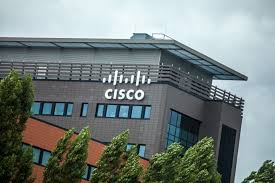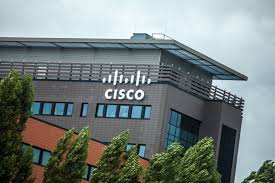
When I unveiled Cisco’s new environmental sustainability strategy, The Plan for Possible, last July, it inspired many employees to consider how they could incorporate sustainability into their roles. This initiative offers numerous opportunities for integration across various departments.
Introducing Pelin Salem, a Radio Regulatory Technical Leader at Cisco, who led an initiative to optimize testing procedures, thereby reducing testing time, enhancing energy efficiency, and lowering greenhouse gas (GHG) emissions. Pelin shares her passion for sustainability, her career journey, and the importance of collaboration in creating effective climate solutions.
When did your interest in sustainability begin?
Pelin: My connection to nature and animals has always driven my passion for environmental and animal welfare causes. As a 7th grader, I was part of the youth leadership team for the TEMA Foundation, a Turkish NGO focused on combating soil erosion. I organized a youth march to protest pollution from a local iron and steel factory, which was well-received and demonstrated the younger generation’s commitment to positive change.
Later, while living in Sonoma, California, in the fall of 2017 with my 6-month-old daughter, I experienced the devastating effects of a wildfire that destroyed many neighborhoods and covered the area in ash for weeks. Witnessing friends and colleagues lose everything to the fire was heartbreaking. The prolonged poor air quality highlighted the impact of climate change on natural disasters, reinforcing my dedication to sustainability efforts.
Tell us more about your professional journey and what brought you to Cisco
Pelin: My career started with a bachelor’s degree in electrical engineering, followed by a role in the defense industry while I pursued a master’s degree in the same field. I then embarked on a Ph.D. journey, which I paused when my husband accepted a position at King Abdullah University of Science and Technology (KAUST) in Saudi Arabia. At KAUST, I pursued a second master’s degree in bioscience, aiming to combine my radio frequency expertise with biomedical research for societal benefit.
After taking time to raise my daughter and complete my Ph.D., I joined Cisco in January 2019. The company’s supportive culture and leadership align with my values, making it the ideal place for my professional growth and long-term career.
Can you explain how you started your work supporting sustainability at Cisco?
Pelin: As a Radio Regulatory Technical Leader on the Corporate Compliance team within the Product and Component Operations Team, I previously worked as a New Product Introduction Test Development Engineer in the Industrial Internet of Things business unit (IOTBU). There, I designed manufacturing test lines for new products, collaborating with manufacturing partners to ensure efficiency.
Cisco's dedication to quality involves rigorous product testing, which can lead to significant GHG emissions, especially in energy-intensive testing areas like the 2-Corner and 4-Corner test sections. These tests ensure product performance under extreme conditions but can cause production delays due to limited capacity. By optimizing these testing procedures, I helped reduce energy use and emissions while maintaining product quality.
To address these challenges, I launched the "Test Optimization Dashboard" project in March 2021. This initiative aimed to automate and visualize the effects of test optimization, reducing the time required for these processes and boosting team enthusiasm. By collaborating with sustainability experts, we developed methods to measure the reductions in GHG emissions resulting from our optimization efforts.
After successful pilot programs, I presented our results to executives, gaining support for broader implementation across various business units. Shifting to automated workflows streamlined the optimization process, significantly cutting down on manual data entry. We also developed plans for further improvements, including an AI-based model to estimate energy consumption.
Currently, we are collecting data to train AI models for tracking GHG emissions. By showcasing the environmental impact of our testing processes and advocating for optimization, we aim to enhance sustainability, product quality, and innovation.
This sounds like a complex project. What kind of support did you receive for it?
Pelin: I am grateful to the SMEs who collaborated with me on this Cisco-wide initiative. Cisco has top talent in various fields, and it’s a privilege to work with them. My current organization was also very supportive, allowing me the space to contribute to Cisco’s sustainability goals beyond my regular duties.
I am especially thankful to Jonathan Davidson, our Executive Vice President and General Manager of Cisco Networking, for his invaluable support. His backing was crucial in achieving a 75% enablement rate for the Test Optimization Dashboard across Cisco. The guidance from my executive mentors and sponsors was instrumental in ideating, securing resources, and developing solutions that advance sustainability in our manufacturing processes.
We know it takes a multifaceted approach when it comes to sustainability. What can Cisco employees do in their day-to-day jobs to help reduce our company’s environmental impact?
Pelin: There are many ways employees can contribute. For example, Cisco aims for 100% of new products and packaging to incorporate Circular Design Principles by fiscal year 2025. Packaging engineers are working to eliminate unnecessary materials and accessory items from our packaging.
Some engineers focus on IoT technology used in smart buildings to optimize energy use, while our operations team has moved away from single-use items in our break rooms and cafeterias.
Is there anything you do in your personal life to be more sustainable, and what advice do you have for others?
Pelin: At home, I focus on reducing waste, conserving energy, choosing eco-friendly products, supporting local and organic options, minimizing water usage, and using low-emission transportation. I also educate my daughter, who just turned 7, on making environmentally conscious choices.
I advise starting with small actions like proper recycling, conserving energy, and supporting local businesses. Every effort, no matter how small, contributes to a more sustainable future.
Thank you for this opportunity to share my story. I hope it inspires others to make changes for a more sustainable future in their own areas of influence.
Introducing Pelin Salem, a Radio Regulatory Technical Leader at Cisco, who led an initiative to optimize testing procedures, thereby reducing testing time, enhancing energy efficiency, and lowering greenhouse gas (GHG) emissions. Pelin shares her passion for sustainability, her career journey, and the importance of collaboration in creating effective climate solutions.
When did your interest in sustainability begin?
Pelin: My connection to nature and animals has always driven my passion for environmental and animal welfare causes. As a 7th grader, I was part of the youth leadership team for the TEMA Foundation, a Turkish NGO focused on combating soil erosion. I organized a youth march to protest pollution from a local iron and steel factory, which was well-received and demonstrated the younger generation’s commitment to positive change.
Later, while living in Sonoma, California, in the fall of 2017 with my 6-month-old daughter, I experienced the devastating effects of a wildfire that destroyed many neighborhoods and covered the area in ash for weeks. Witnessing friends and colleagues lose everything to the fire was heartbreaking. The prolonged poor air quality highlighted the impact of climate change on natural disasters, reinforcing my dedication to sustainability efforts.
Tell us more about your professional journey and what brought you to Cisco
Pelin: My career started with a bachelor’s degree in electrical engineering, followed by a role in the defense industry while I pursued a master’s degree in the same field. I then embarked on a Ph.D. journey, which I paused when my husband accepted a position at King Abdullah University of Science and Technology (KAUST) in Saudi Arabia. At KAUST, I pursued a second master’s degree in bioscience, aiming to combine my radio frequency expertise with biomedical research for societal benefit.
After taking time to raise my daughter and complete my Ph.D., I joined Cisco in January 2019. The company’s supportive culture and leadership align with my values, making it the ideal place for my professional growth and long-term career.
Can you explain how you started your work supporting sustainability at Cisco?
Pelin: As a Radio Regulatory Technical Leader on the Corporate Compliance team within the Product and Component Operations Team, I previously worked as a New Product Introduction Test Development Engineer in the Industrial Internet of Things business unit (IOTBU). There, I designed manufacturing test lines for new products, collaborating with manufacturing partners to ensure efficiency.
Cisco's dedication to quality involves rigorous product testing, which can lead to significant GHG emissions, especially in energy-intensive testing areas like the 2-Corner and 4-Corner test sections. These tests ensure product performance under extreme conditions but can cause production delays due to limited capacity. By optimizing these testing procedures, I helped reduce energy use and emissions while maintaining product quality.
To address these challenges, I launched the "Test Optimization Dashboard" project in March 2021. This initiative aimed to automate and visualize the effects of test optimization, reducing the time required for these processes and boosting team enthusiasm. By collaborating with sustainability experts, we developed methods to measure the reductions in GHG emissions resulting from our optimization efforts.
After successful pilot programs, I presented our results to executives, gaining support for broader implementation across various business units. Shifting to automated workflows streamlined the optimization process, significantly cutting down on manual data entry. We also developed plans for further improvements, including an AI-based model to estimate energy consumption.
Currently, we are collecting data to train AI models for tracking GHG emissions. By showcasing the environmental impact of our testing processes and advocating for optimization, we aim to enhance sustainability, product quality, and innovation.
This sounds like a complex project. What kind of support did you receive for it?
Pelin: I am grateful to the SMEs who collaborated with me on this Cisco-wide initiative. Cisco has top talent in various fields, and it’s a privilege to work with them. My current organization was also very supportive, allowing me the space to contribute to Cisco’s sustainability goals beyond my regular duties.
I am especially thankful to Jonathan Davidson, our Executive Vice President and General Manager of Cisco Networking, for his invaluable support. His backing was crucial in achieving a 75% enablement rate for the Test Optimization Dashboard across Cisco. The guidance from my executive mentors and sponsors was instrumental in ideating, securing resources, and developing solutions that advance sustainability in our manufacturing processes.
We know it takes a multifaceted approach when it comes to sustainability. What can Cisco employees do in their day-to-day jobs to help reduce our company’s environmental impact?
Pelin: There are many ways employees can contribute. For example, Cisco aims for 100% of new products and packaging to incorporate Circular Design Principles by fiscal year 2025. Packaging engineers are working to eliminate unnecessary materials and accessory items from our packaging.
Some engineers focus on IoT technology used in smart buildings to optimize energy use, while our operations team has moved away from single-use items in our break rooms and cafeterias.
Is there anything you do in your personal life to be more sustainable, and what advice do you have for others?
Pelin: At home, I focus on reducing waste, conserving energy, choosing eco-friendly products, supporting local and organic options, minimizing water usage, and using low-emission transportation. I also educate my daughter, who just turned 7, on making environmentally conscious choices.
I advise starting with small actions like proper recycling, conserving energy, and supporting local businesses. Every effort, no matter how small, contributes to a more sustainable future.
Thank you for this opportunity to share my story. I hope it inspires others to make changes for a more sustainable future in their own areas of influence.


 How Cisco's Test Optimization Dashboard Advances Sustainability and Reduces GHG Emissions
How Cisco's Test Optimization Dashboard Advances Sustainability and Reduces GHG Emissions




 Companies
Companies